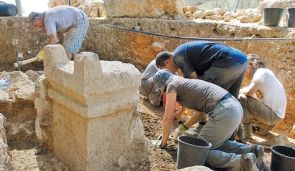OF THE
TIMES
A nation that continues year after year to spend more money on military defense than on programs of social uplift is approaching spiritual doom.
Why is it missing from this article that the guy was shot in the back? Hard to claim self defense in such case even inside your own home.
May I point out, it’s not only Australians being hoodwinked, RT banned in these nations. al Jazeera was bombed continuously reporters murdered, by...
' You don't need to change your daily behaviour or activities. Government authorities will tell you if this changes ,' ' Local authorities will...
What do the leaders if this global WEF keep attacking? Oil. Oil for energy... why? They want everything controlled by their electrical grid......
Gee, thanks for the heads-up, Chief Blob.
To submit an article for publication, see our Submission Guidelines
Reader comments do not necessarily reflect the views of the volunteers, editors, and directors of SOTT.net or the Quantum Future Group.
Some icons on this site were created by: Afterglow, Aha-Soft, AntialiasFactory, artdesigner.lv, Artura, DailyOverview, Everaldo, GraphicsFuel, IconFactory, Iconka, IconShock, Icons-Land, i-love-icons, KDE-look.org, Klukeart, mugenb16, Map Icons Collection, PetshopBoxStudio, VisualPharm, wbeiruti, WebIconset
Powered by PikaJS 🐁 and In·Site
Original content © 2002-2024 by Sott.net/Signs of the Times. See: FAIR USE NOTICE

Saying there is a connection between this ‘Philistine’ altar (which has 2 horns) and a Jewish altar (which has 4) is a true as someone saying that a bicycle (which has 2 wheels) is closely connected to a car (which has 4)! As the SOTT editor’s comment, it is clearly another case of retrograde archaeology. The two horned altar is more likely derived from the ancient Cretan (I hate to say Minoan because that is another falsified history) tradition of what mainstream archaeologists have called ‘The Horns of Consecration’, namely the mythical ubiquitous symbol of the power of the cosmic bull/the great goddess of divine being. This symbol would have travelled east when the break up of their world took place during the Bronze Age collapse and the peoples migrated to the mainland Middle East. Ironically of course, the bull was seen as the greatest threat to that great fraud YAHWEH and the bible recounts multiple misogynistic efforts to stamp it out! It seems to me that this line of thinking would be a more likely source of understanding that more invented Hebrew history!